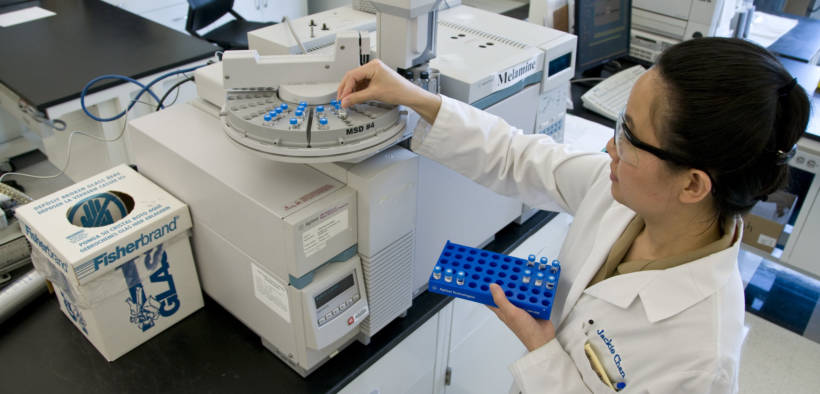Can FDA Regulations Keep Up With Today’s Lightning Fast Markets?

The proliferation of unregulated CBD products is a striking example of troubling FDA regulation delay but far from the only one.
While the U.S. Food and Drug Administration (FDA) has served an invaluable role in U.S. history by keeping numerous questionable food and drug products out of the hands of consumers, its also been beset by criticism. In the 1980s during the height of the AIDS epidemic, it was frequently accused of dragging its feet on approving promising drugs while patients died from HIV/AIDs. But other criticisms accuse the organization of being too lax in its approval process. But in 2019, despite thousands of rules and FDA regulations established over the years, one of the biggest FDA concerns is can it keep up with today’s lightning-fast pace of product innovation when a new product is only one Google search or Alibaba supplier away?
The History of the FDA
The U.S. Food and Drug Administration (FDA) has a fascinating origin story. In the late 1800s, new developments were rapidly being introduced at various stages of the food supply chain; meat processing had moved from the farmyard and butcher to industrial-scale factories in urban settings, food was being shipped longer distances, and new additives were being put in to stop spoilage and keep food “fresh” longer. None of these things were in any way regulated.
Harvey Wiley was the chief chemist of the Bureau of Chemistry for the U.S. Department of Agriculture (USDA) and had misgivings about the changes that were being made to food. He established testing procedures for the most common food additives of the time, including things like formaldehyde and borax. The tests involved having government workers consume measured amounts of the chemicals with their food and document the effects. Newspapers referred to them as the “poison squad.” Their findings and the public response to Upton Sinclair’s novel The Jungle describing the unsanitary and dangerous conditions in Chicago’s meatpacking district led to the passage of the 1906 Pure Food and Drugs Act, which laid the foundation for the FDA.
The U.S. now has thousands of FDA regulations and rules to safeguard our food and medicine, but food, cosmetics and drugs are constantly being modified. It seems the markets for these goods are once again innovating at a pace that the regulatory mechanism can’t keep up with. The lag time can be confusing for consumers and potentially dangerous. Among the products eluding regulation are CBD, e-cigarettes and more.
Does the FDA Regulate CBD?
Cannabidol (CBD) a compound found in marijuana is increasingly showing up on store shelves and online in products from mascara to drinks to pet food, with many making claims about CBD’s ability to cure or treat various ailments. While CBD is an ingredient in two prescription drugs the FDA has approved, it’s not legal as a dietary supplement or over-the-counter medical treatment for anything else. Besides those two drugs, there are no FDA regulations for CBD. This would come as a surprise to many Americans; an October poll by the Grocery Manufacturer’s Association found that of the 62% of Americans who have heard of CBD, the vast majority either thought the FDA regulated CBD or weren’t sure.
The poll also showed high rates of misunderstanding about what CBD is and what it does, even among people who are buying it. Or perhaps more accurately, among people who think they are buying it. The FDA has been testing products that claim to contain CBD since 2015 and has routinely found many to be mislabeled, with some containing no detectable CBD and others having much more than they claimed. After years of continued availability of these products, introduction of new products, mislabeling and uncertainty about what effects CBD actually does have the federal government is only just now beginning the process of regulating CBD and likely won’t have real regulation in place until well into 2020.
Other New and Unregulated Products
CBD is a striking example of the FDA’s regulation delay but far from the only one. The FDA only gained regulatory control over e-cigarettes in 2016 and still has not managed to enact regulation to prevent them from being sold online. An unregulated additive that’s used in unregulated THC vaping products is the likely cause of the ongoing outbreak of e-cigarette, or vaping, product use-associated lung injury (EVALI) which has caused more than 2000 illnesses and 42 deaths so far.
The dangers from other types of regulatory gaps may be less urgent but are still worth considering. Plant “milks” have very different nutritional makeup from cows’ milk, and these differences can be especially important for kids. These products have been on store shelves for more than a decade, bearing the name milk and often stored in the dairy aisle. Efforts to enact national level labeling regulations for plant-based dairy and meat alternatives are still in the early stages, and it could be years before clear guidelines are available for consumers.
The FDA has also been in the spotlight recently thanks to a report from the Environmental Working Group revealing 2,000 untested common synthetic ingredients used in food packaging. A loophole known as the GRAS exemption has permitted thousands of food additives to be added to common foods without undergoing any F.D.A. safety review.
What the Future May Hold for the FDA and Regulations
Even if the FDA and USDA were to address each of these issues, something else would be around the corner, new products or old products that are reaching consumers without adequate government oversight. Reacting more quickly may be part of the answer, but it may not be enough.
The poison squad model of testing things that consumers are already ingesting will have a hard time keeping up with the current speed of the consumer goods market. But the inspiration behind the poison squad was that new processes and new types of regulations could be created to safeguard consumers. This was the foundation of the FDA and as the pace of new products continues to quicken they may need to draw on this again and create a new model of oversight that can keep up.













